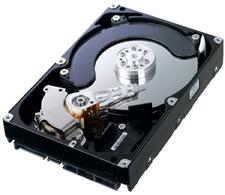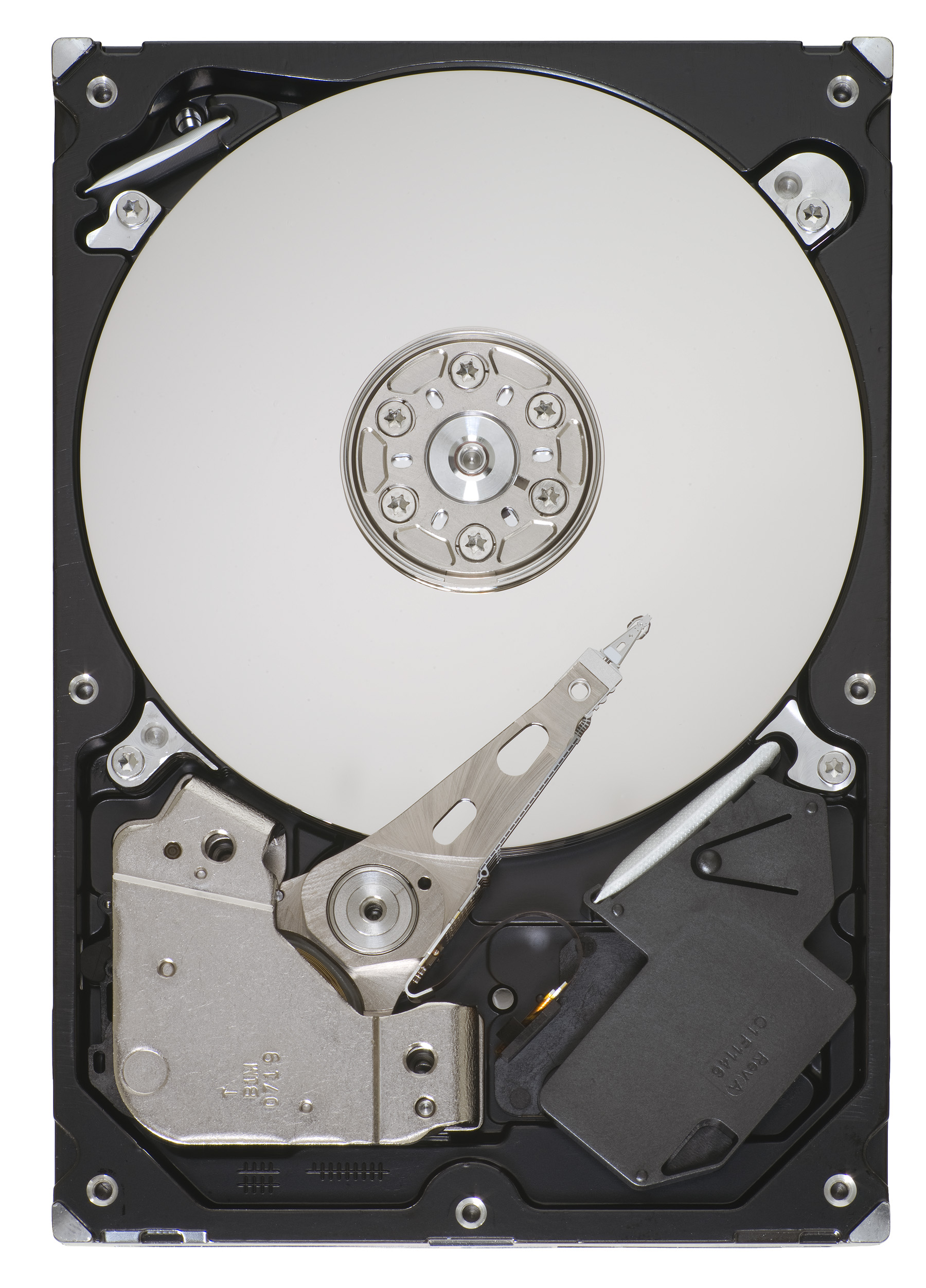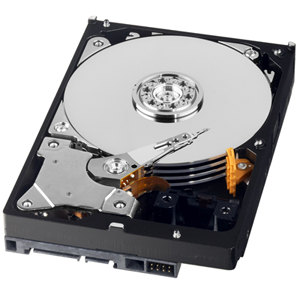Hard disk drives, like the engines in our cars, have been massively upgraded over the last two decades. Although massive IOPS and horsepower get all the headlines, energy-efficient designs deserve a look as well. Manufacturers have recently introduced some new tricks to coax out a little more performance and capacity from a lot less energy, and we are going to examine three archetypes of the modern energy-efficient desktop disk drive: Seagate’s Barracuda LP, Western Digital’s Caviar Green, and Samsung’s EcoGreen F2.
They may not look any different, but don’t be fooled: Today’s hard disks are the result of amazing technological gains in capacity, performance, and efficiency. Drive manufacturers face the same trade-offs that engine makers face: Do we sacrifice performance for efficiency or tilt the scales in the opposite direction? What about packaging, flexibility, and the OEM market?
Although we are focusing on the low-power desktop market, these same drives have shown up in enterprise arrays recently: The Seagate Barracuda LP, WD RE4-GP (a cousin to the Caviar Green), and Samsung F2 have all seen use in RAID systems. So these drives can reduce data center bills as well as being at home in your desktop. All three drives are tested in detail over at Tom’s Hardware.
The Traditionalist: Samsung EcoGreen F2

Samsung isn’t as well-known in the desktop disk drive market as Seagate, Hitachi, and Western Digital, but their F1 line proved popular over the last few years. Samsung put forth a good combination of solid performance, low price, and a decent warranty, but didn’t slather on the buzzwords or mythical advanced features. The new F2 line continues this trend, offering good performance from 500 GB platters at the traditional 5400 rpm spindle speed.
The EcoGreen F2 achieves low-power performance the old fashioned way: Samsung uses fewer platters, heads, and other components. 500 GB platters give the three-platter drive both performance and efficiency with capacity of 1.5 TB. The F2GP is available with either 16 MB or 32 MB cache, as the HD153UI or HD154UI, respectively, and can be had for cheap: NewEgg lists the 1.5 TB HD104UI in OEM guise at just $99. Performance, capacity, efficiency, and value: What’s not to like?
The Individualist: Seagate Barracuda LP

Folks “in the know” about disk drives know that they come in just a few spindle speeds: Desktop drives are either 5400 rpm or 7200 rpm, and enterprise drives add 10,000 rpm and 15,000 rpm to the mix. They also know that 5400’s are slow and 15k’s are blazing fast. But these simple spindle speed levels weren’t always in place, and Seagate is blazing a new trail with their 5900 rpm Barracuda LP.
Keeping the spindle speed below 7200 rpm allowed Seagate to use 500 GB platters for capacity, but bumping it over 5400 rpm allowed them to boast better performance than their competitors. Unlike Samsung, which tops out at 1.5 TB, Seagate goes all the way to 2 TB with a four-platter offering.
The Prestidigitator: Western Digital Caviar Green
Western Digital has never been at home in enterprise RAID systems, but their drives are extremely popular in the home and small business segment. Their line is divided into three colored bands: Black is performance, Blue is value, and Green is efficiency. The Caviar Green line looks like a conventional drive but packs some curious tweaks.

One curious aspect of the drive, however, is its rotational speed. Many reports suggest that it varies its spindle speed between 5400 and 7200 rpm, delivering both performance and efficiency. Although Western Digital does not discuss the drive’s actual speed, they do not claim that it is variable.
The Caviar Green’s IntelliPower feature is said to deliver “a fine-tuned balance of spin speed, transfer rate and caching algorithms designed to deliver both significant power savings and solid performance.” In truth, IntelliPower is just a nice way of saying “it outperforms 5400 rpm drives so we didn’t want it to wear that mark of shame.” Acoustic tests have shown that the 1 TB drive does indeed spin at 5400 rpm, but WD says that some models might have different (fixed) speeds.
The Caviar Green has a big brother, the RE4-GP, which is wowing the press. Certified for RAID use and fortified with a 64 MB cache, the RE4-GP is otherwise closely related to the desktop Caviar Green. And it really brings the goods: Tom’s Hardware shows that it outperforms the other “green” offerings in both I/O and power consumption, a nice trick!
Conclusion
Today’s “green” hard disk drives are definitely stepping up with serious performance and low-power operation. Samsung’s straightforward approach may not be sexy, but it works. Seagate’s use of a non-standard spindle speed is interesting, but it is not clear if this brings much performance benefit. Although Western Digital’s reluctance to attach a “5400 rpm stigma” to their excellent drives is understandable, it would be best for them to simply state the drive speed instead of confusing everyone with their IntelliPower marketing line. That said, reviewers are mighty impressed by the WD Caviar Green and its enterprise cousin, the RE4-GP.
Thanks for an interesting look into current drive tech, I learned a few things about the state of the art.
However, I don’t see the differences between the drives. They all appear to have made pretty much the same design choice: Keep the speed down so that they can use higher density platters and consume less power. What am I missing?
Thanks,
-ben
We should all remember that faster rotational speeds are more about speeding random I/O where you have on average 1/2 a rotation to wait for your data after each head movement than sequential I/O. Since the apps we’re likely to use 1.5TB or larger drives in are more sequential (OK dedupe breaks that somewhat) than random 5400RPM probably isn’t much of a performance hit.
Now I have to test. Calling WD.
– Howard
We should all remember that faster rotational speeds are more about speeding random I/O where you have on average 1/2 a rotation to wait for your data after each head movement than sequential I/O. Since the apps we're likely to use 1.5TB or larger drives in are more sequential (OK dedupe breaks that somewhat) than random 5400RPM probably isn't much of a performance hit.
Now I have to test. Calling WD.
– Howard